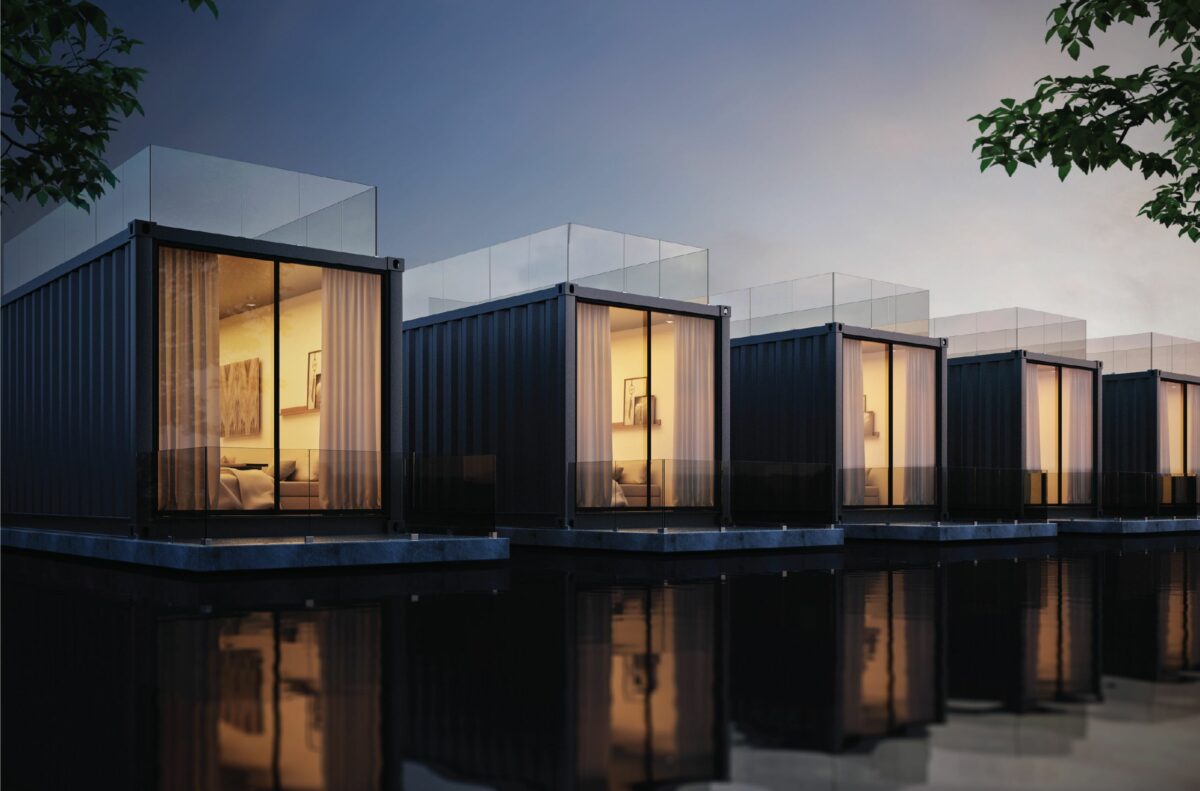Greece is one of the foremost countries in shipping, with thousands of cargo crates stacked in ports all over the country every day. So, what happens when these containers are abandoned at ports, as is usually the case due to return costs?
At Astydama we see Cargotecture as an ideal solution that can answer that question, by significantly reducing construction costs and time, while promoting green real estate development. The architectural use of cargo containers used in shipping via upcycling is a new trend that gives smart, sustainable solutions to several challenges in the sector, and then some! Not only does Cargotecture boost efficiency in real estate development, it also considerably increases the positive environmental footprint of a project, in a neatly modern styled package, or… ‘box’.
We believe that a real estate product using cargo containers, instead of traditional brick and mortar materials, can cut costs by up to 30%. And all this while essentially upcycling scrap, and reducing the use of natural resources, such as timber, minerals, and of course, energy. It goes without saying that necessary modifications need to be made, but even so, when considering construction speed, the benefits become even more evident, as a container-based construction can be completed within a month in total.

When properly handled, these containers are meant to last, and survive, a lifetime. Sturdier than many building materials, containers are built to protect cargo during oceanic waves, storms, as well as adverse transport conditions on land, proving to be a lifesaver during earthquakes and other disasters, which are sadly becoming commonplace due to climate change.
Cargotecture is not merely a fun DIY activity. It needs to be carried out professionally, following specific standards (for example, containers painted with lead-based tinctures shouldn’t be used), and applying all necessary modifications, such as insulation, structural reinforcements etc.
Overall, the potential is vast, and can be particularly noted in several new Cargotecture projects, both residential and commercial, popping up all over the world. When applied properly, this methodology could considerably reduce environmental stress from real estate projects, by minimising use of raw materials, as well as construction timeframes (and, of course, resources spent).

We see a bright future for Cargotecture in Greece, where costs can be further squeezed due to the country’s mild climate, and abundant natural resources in renewables which can be combined smartly creating micro-grids in modern development projects.
We’re already in the process of planning the development of a cargo-container based project in Athens. The idea is to create a sustainable venture with a positive impact, both social and environmental. Stay tuned for more!
Contact us for more information about Cargotecture, or to learn more about our projects.
